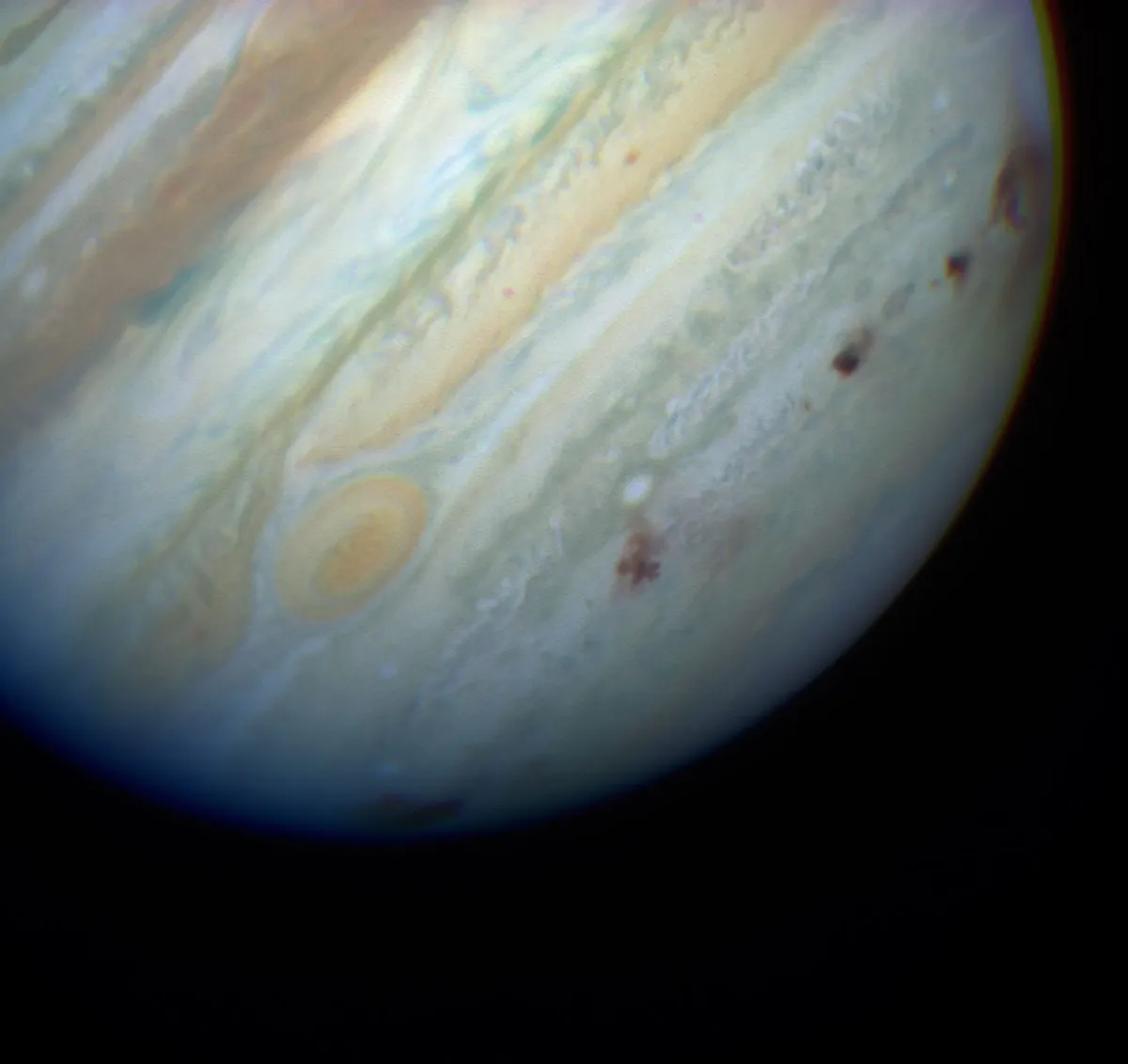Jupiter is the largest planet in our Solar System, but it can be hard to grasp just how big it really is.
Often, when we're talking about things in space, the vast sizes and vast distances are just too impossibly big to comprehend.
More cosmic enormities

A popular fact that's often cited is that all the other planets of the Solar System could fit inside Jupiter.
But is this actually true? Let’s take a closer look.

Jupiter is absolutely enormous
Jupiter is a gas giant, not with a solid surface, but instead made mostly of hydrogen and helium.
It has a diameter of about 139,822km (86,881 miles), making it over 11 times wider than Earth. But size is only part of the story.
Volume tells us how much space something takes up, and in terms of volume, Jupiter is staggering. It could hold more than 1,300 Earths inside it.
For comparison:
Saturn, the second-largest planet, has a volume about 764 times that of Earth.
Neptune and Uranus are much smaller, each holding about 60 Earths, give or take.
Mercury, Venus and Mars are all smaller than Earth
When you add up the total volume of every other planet – Mercury, Venus, Earth, Mars, Saturn, Uranus and Neptune – you get a combined total that’s still less than Jupiter’s.
This means that, at least mathematically, all the planets could indeed fit inside Jupiter.

Would they really fit inside Jupiter?
When we say that all the other planets could fit inside Jupiter, it's true, but there is a caveat to this thought experiment.
Planets are solid or gaseous bodies with their own gravity, atmospheres and magnetic fields, and they're largely spherical bodies.
If you did try to drop Saturn or Earth into Jupiter, enormous gravitational forces and intense pressures would tear them apart long before they settled inside.
Jupiter’s deep atmosphere is a turbulent mix of storms, lightning and crushing density.
So when we say all the planets would fit inside Jupiter, it is, of course a thought experiment!
If we could somehow physically place all the Solar System planets into Jupiter, they wouldn't survive.

Why it matters
We often talk about our Solar System as a series of extremes, like how all the planets could fit between Earth and the Moon.
Or by relating them to everyday objects, like how Saturn could float in a (big enough) bathtub.
By understanding Jupiter’s size, and how it's big enough to fit all the other planets inside it, we get a view of just how enormous this gas giant planet is, and ultimately how small our own planet is.
We can also better appreciate its role in shaping the Solar System, as described in the Grand Tack hypothesis.

Jupiter's big, but not that big
As big as Jupiter is, it’s dwarfed by planets orbiting distant stars, which are known as exoplanets.
Astronomers have discovered around 6,000 exoplanets, and many of them make Jupiter look tiny.
Examples of exoplanets bigger than Jupiter include KELT-9b, HAT-P-7b and WASP-127b.
There are even 'super Jupiter' exoplanets like Epsilon Indi Ab that positively dwarf Jupiter.
So while Jupiter dwarfs the planets in our Solar System, you don't have to travel very far in cosmic terms before you meet other worlds that dwarf Jupiter.
Such is the way of the Universe!
